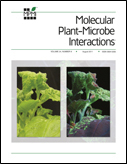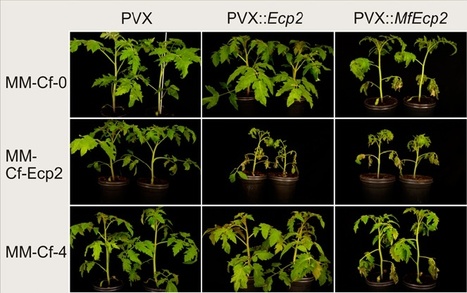
|
Scooped by Kamoun Lab @ TSL |
Most research on host-pathogen interactions is focused on mechanisms of resistance, but less is known regarding mechanisms of susceptibility. The wheat-Stagonospora nodorum pathosystem involves pathogen-produced effectors, also known as host-selective toxins, that interact with corresponding dominant host genes to cause disease. Recognition of the S. nodorum effectors SnToxA and SnTox2 is mediated by the wheat genes Tsn1 and Snn2, respectively. Here, we inoculated a population of wheat recombinant inbred lines that segregates for Tsn1 and Snn2 with conidia from two S. nodorum isolates, Sn4 and Sn5, which both produce SnToxA and SnTox2 to compare the effects of compatible Tsn1-SnToxA and Snn2-SnTox2 interactions between the two isolates. Genetic analysis revealed that the two interactions contribute equally to disease caused by isolate Sn4, but the Tsn1-SnToxA interaction contributed substantially more to disease conferred by Sn5 than did the Snn2-SnTox2 interaction. Sequence analysis of the SnToxA locus from Sn4 and Sn5 indicated they were 99.5% identical with no polymorphisms in the coding region or the predicted promoters. Analysis of transcription levels showed that expression levels of SnToxA peaked at 26 hours post inoculation for both isolates, but SnToxA expression in Sn5 was more than twice that of Sn4. This work demonstrates that necrotrophic effectors of different isolates can be expressed at different levels in planta, and that higher levels of expression lead to increased levels of disease in the wheat-S. nodorum pathosystem.
No comment yet.
Sign up to comment



 Your new post is loading...
Your new post is loading...







